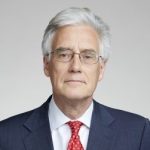We may be living in a world of very different normal interest rates than we have expected. It suggests that we need to contemplate a category of policy that essentially hasn’t been present in the discussion… I think we have a lot more that we need to learn and to understand.
Many economists fear the low real interest rate environment that advanced economies are currently experiencing, although initially believed to be cyclical, may persist for many years. Often quoted as evidence of a long-term structural trend, the eight-year period following the global financial crisis has seen prolonged slow growth coupled with ultralow interest rates. The troubling implications of this scenario for the longer term, known as “secular stagnation”, include:
- The inability of central banks across the developed world to provide stimulus in future downturns;
- The potential failure of institutional investors to generate adequate returns to fulfill future pension and insurance obligations;
- A breakdown in the banking sector’s ability to lend and attract deposits; and
- A continuation of stagnant or declining economic growth, with the attendant social and economic consequences.
These effects will have severe and wide-reaching implications on real economic outcomes and macroeconomic policy, with the potential to also exacerbate wide social disruption, both within and among nations. Such economic conditions could also lead to major international trade and exchange rate dislocations.
Despite these worrisome prospects, there is little economic research on these issues. For instance, a scenario of enduring low real rates or even negative nominal rates is very difficult to fit into standard economic theory and has not been addressed by substantial empirical study. Although some investors believe the recent U.S. presidential election may generate a short-term economic stimulus, many scholars are skeptical about a sustained impact and see long-term low interest rates as a much more likely scenario. The Institute for New Economic Thinking (INET) is convening a group of leading and emerging scholars to advance debate on secular stagnation and to offer a forward-looking policy framework.
THE PROJECT
INET President Rob Johnson and Chairman Adair Turner have teamed with former U.S. Treasury Secretary and Harvard University professor Lawrence H. Summers and Brown University professors Gauti Eggertsson and Neil Mehrotra to direct the project. The committee has brought together a collection of leading macroeconomists and INET-affiliated scholars to engage in a productive, research-based dialogue addressing the following issues:
- In the event of prolonged stagnation what are the macroeconomic instruments that can be deployed to effectively manage stabilization at very low or negative interest rates?
- What is the role of monetary and fiscal policy?
- What are the open economy implications of coping with secular stagnation?
- What are the causes of persistent deficient aggregate demand? They may include, but are not limited to:
- Debt overhangs;
- Inequality and the vitality of aggregate demand;
- Technological pessimism; and
- Difficulties with the sectoral transformation of evolving economies;
- How does the interaction between aggregate demand and potential output (which may inspire investment demand) inform the design of policies to counteract persistent stagnation?
The project officially started with a discussion between Summers and Turner moderated by Rob Johnson in the fall of 2016 in Washington D.C. to call attention to policy makers and the wider public to the challenges posed by secular stagnation. (Please see this link for a video of the discussion.) A series of twelve papers have been commissioned to be presented at a conference on December 15, 2017 in New York at the offices of Credit Suisse, who has generously offered to serve as host.
The Secular Stagnation Project will shed light on and explore policy responses to a pressing worldwide issue, which up to this point, has received limited rigorous study. The standard economic models are not equipped to address this unique interest rate environment and the situation presents multiple lines of inquiry that deserve exploration.
The goal is to influence mainstream scholars to engage on secular stagnation, both as an important issue in its own right, and as a way to open up a broader dialogue within the economics profession to include more diverse theoretical and empirical perspectives of the modern macroeconomy. Please join us at the December 15 conference for the presentation of the various researchers.





